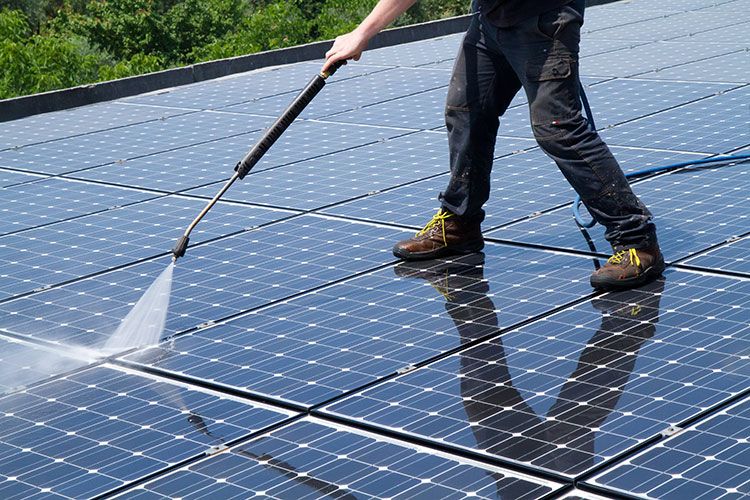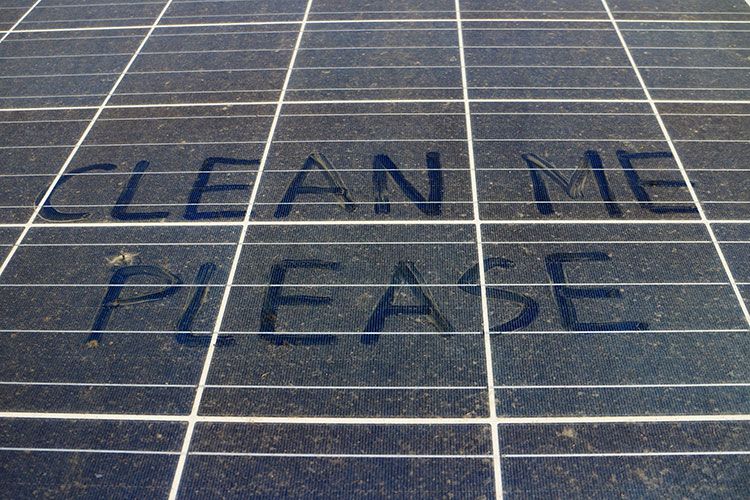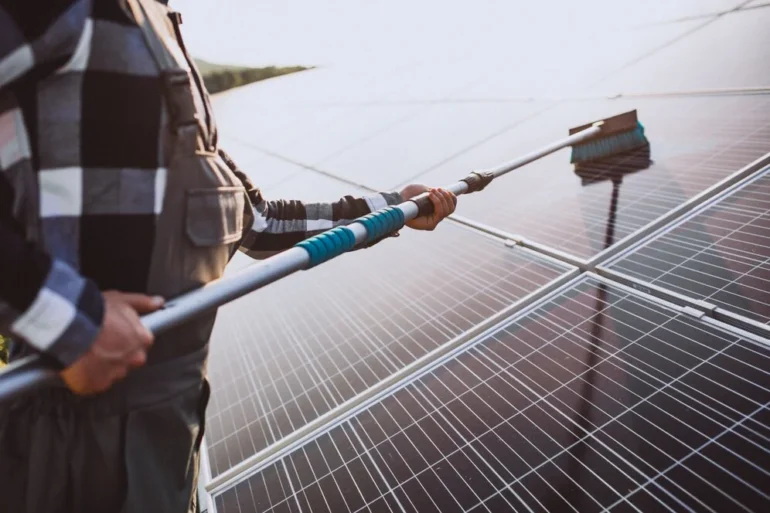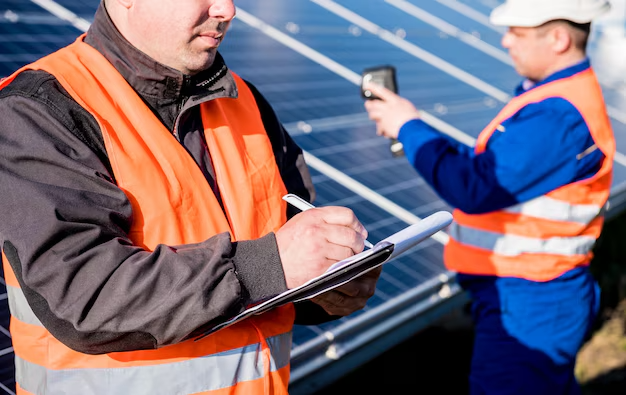When you first install your solar panels, you can expect them to give you their best performance. In a few years though, this performance and efficiency will slightly reduce. According to industry experts, solar panels can remain viable for 40 years before you can finally give up on them. However, there is a proven way to ensure the system will perform excellently, so you can continue relying on it every single day: maintenance.
Every appliance you have in your home requires some sort of maintenance. And solar panels should be treated just the same as them, especially because they are your source for free electricity.
What Does Solar System Maintenance Entail?
To put it simply, the maintenance of solar panels is mainly about cleaning them. When they are filthy, they do not perform their best. When they are dirt-free, this is when they will work their best, and they can gather the most power from the sun. Of course, it goes hand in hand with the fact that you have positioned them in the ideal direction.
In Australia, the direction of the panels will depend on the location. It is mostly recommended to keep the panels facing north to get higher yields. The roof pitch will also dictate how you should install the panels. TheEasySolar.com.au experts advise Perth residents to go for this direction as well. However, if your home does not permit it, you can still get 86% efficiency when you choose either west or east.

The good news for Perth residents is that they can also use south-facing panels if there is no other choice. They can still get up to 70% efficiency when the panels face this direction. In comparison, the south is not recommended for Sydney and Hobart, which have an efficiency of 68% and 62% respectively.
Some Reminders Before Cleaning
Even if you live in an area with clean air, dust can still accumulate on the panels. They can stay on the panels, which will reduce their efficiency because dirt will block sunlight. Essentially, you do not get the most out of your investment because of the lower output.
If you are a handyman, the first thing that you think of is you can do the cleaning yourself. It does seem extremely simple. You just have to get up there and clean the panels with water and perhaps soap. However, cleaning the panels can be a dangerous task.
You will have to climb the roof from which you could slip if you are not careful. You could even scratch the panels if you do not know what you are doing. You may think the cleaning materials under the sink are perfect to use, so you just take your bucket with water and start scrubbing.
The better solution is to simply hire a professional. You may think it is an additional expense that is not even necessary, but it does make sense. Instead of risking your safety, you should leave this arduous job to the professionals. Perhaps next time, you can do it yourself after you have seen how to properly clean the panels
In reality, panels today are created to be sturdy. The technology has come a long way in a short time, which is why cleaning does not have to be done all the time. A US study performed in Tucson, Arizona discovered that removing normal grime can improve the output of the panels by a little bit more than 1%.
During a storm, twigs, leaves and other debris could be blown onto the solar panels, meaning that cleaning is essential. The same goes if you have noticed that the output of the panels has slightly lowered. In this case, you should immediately check for dirt. Birds and other insects can leave some nasty surprises for you on the panels themselves. If confirmed, you should certainly clean them.
Additionally, if you have flat panels, meaning they are not angled like most other panels are, you should clean them. You cannot rely on rain alone if you want to get the most of your system. When it pours, water will have no place to go. While yes, water will eventually evaporate on a sunny and rain-free day, grime will still be left behind.
Also, debris, such as leaves, will land on the panels and remain there. These materials can cause the deterioration of the panels’ performance.
How to Clean Your Solar Panels
With the warnings out of the way, it is time to learn how you can take care of the solar panels for the best results. On normal occasions, you can let the rain clean the panels for you. There is no need to rinse and you do not even need soap. Mother Nature will take care of the task, while you enjoy a more efficient solar system.
Australia gets enough rainfall on average. Adelaide is the country’s driest capital, which could mean you may have to clean a little more than your friends over at Perth if you live here. Meanwhile, Perth receives approximately 880mm of rain every year. It should be enough to get rid of the built-up grime.
Location does dictate whether or not you will clean your panels regularly. It will also tell you how often cleaning should be done. Usually, cleaning is required more often if you live in the following areas:
- Near the ocean
- Busy freeway
- Dusty neighbourhood
- Close to a plant or heavy industry
Your panels will need more cleaning because they will get dirty faster.
Climbing up onto the roof, especially when wet, can be dangerous. It is why cleaning the solar array is mostly performed from the ground. You can use a window cleaning pole with a long handle, so you do not have to go up. The pole should have an extremely soft sponge and a wiper. You should also have a bucket of water with some soap. Make sure you do not use detergent because of the harsh chemicals.
For successful cleaning, here are even more useful tips:
- Clean early in the morning so it is not hot.
- The morning dew will also help soften deposits, making it easy for you to clean the panels.
- You can use a garden hose, which makes cleaning simple.
- If you choose to use a garden hose, you will still need to go up the roof. It is necessary to wipe off the panels, so water does not dry.
- Using tap water means you have to deal with minerals that become deposits unless you remove them before they dry up.
Every year or two, you may need the help of a professional cleaner. A qualified solar professional will know what to do. You do not have to climb up your roof, and you can trust that the solar array will be entirely clean.
Even better, the professional will help you understand what you need to ensure quality maintenance for the panels.
More Maintenance Tasks for Better Performance and Longer Life of the Solar System
Once you have the panels installed, they are virtually maintenance-free. However, it does not mean you should not check up on them to ensure they keep giving you great outputs. If you want to maximise your investment, the best way is to keep the panels and the whole system well-maintained.
Here are important tasks to fulfil that will protect the entire solar system:
- Solar Panels
Aside from cleaning, solar panels should be checked for defects regularly. If you hire a professional to clean the panels, you can get vital information about the current state of your panels. Typically, you will know about the following:
- Existence of cracks and damage
- Level of moisture penetration
- Presence of frame corrosion
- Frame alignment and sturdiness
- Cable integrity
- Voltage measurements
- Junction box connections
- Seal reliability
- Water accumulation
- Existence of inverter damage
Of course, you can do the visual inspection on your own. Look for fogged glazing, leaks, discolouration, and delamination. Any visible flaw should be noted in case they may require corrections.
- Battery
Batteries are used to store power, which can be utilised later. Not all solar systems have batteries. However, if you do, you should ensure they are carefully maintained regularly to help extend their service life. Some maintenance tasks for batteries are:
- Checking and cleaning: You need to inspect if there are any electrolyte leaks and cracks. The terminals and connectors should not be corroded.
- Batteries should be dry and clean without any residues of corrosion and electrolytes. Usually, cleaning should be performed every month.
- Examining for acid spills: If you find any acid spillage, you should neutralise it right away. Use water mixed with bicarbonate soda.
- Keeping at a high charge: You should determine the state of charge of the battery, which should always be “high.” You can use a volt metre to measure the battery voltage. Make sure that you log each voltage every time you measure it.
When the batteries are low, you will usually get a visual and sound notification. Recharge it to ensure that the battery is at its optimum levels.
Inverter and Charge Controller
The following tips are also applicable to the battery charger. These components, namely the inverter, charge controller, and battery charger, are all maintained the same way. You can use a dry cloth to remove dirt and dust that may have accumulated over time.
Once again, you should perform a visual inspection that will tell you whether or not all the indicators are working. LED lights should be switched on and wires are not loose. The charge controller should tell you that the system is charging, in case you decided to check on it in the morning. If it is not charging while the sun is up, you should immediately contact your installer.
- Connections
Any wires leading to and from your solar system should be checked thoroughly regularly. You should make sure there are no breaks and cracks. Insulation or conduits should not show any signs of deterioration.
Open and check the panel boxes. If there are rodents in your property, they could infiltrate the box. Ensure there are no other insects as well. The connections should also not have any corrosion and burning, which guarantees that they are all in good shape.
When you turn the switches on or off, they should not spark. You must check the following wiring components for any signs of damage:
- Charge controller wiring leading to the battery bank
- Charger or inverter connection going to the battery bank
- Solar panel wiring to the charge controller
- Generator wires connected to the charger or inverter
- Battery bank connections to the DC outlets
- Inverter or charger to the AC outlets
The ground wires should not be broken as well. If you find that there is damage, you should call your installer right away.

Managing a Good Maintenance Schedule
You may be a busy person and you may not always have the time to keep inspecting your solar system. The good news is that its components do not need to be checked every day. However, some tasks should be done every week, especially with the inspections. You should assess the following components weekly:
- System wiring
- Other connections
- Vaccine freezer
- Lights
- Battery
- Battery charger and inverter
- Charge controller
Each month, you should allocate some time to clean the batteries and top them up. Every three months, you can clean your solar panels, especially if you live in a busy area. However, if you are not surrounded by a lot of trees and industrial facilities, you can clean once every six months or even annually if it rains regularly.
Keep a logbook of your maintenance procedures. This way, you do not lose track of the performance of your solar system. If something comes up and you need to talk to your EasySolar installer, you can provide all the necessary details to solve the matter immediately.







